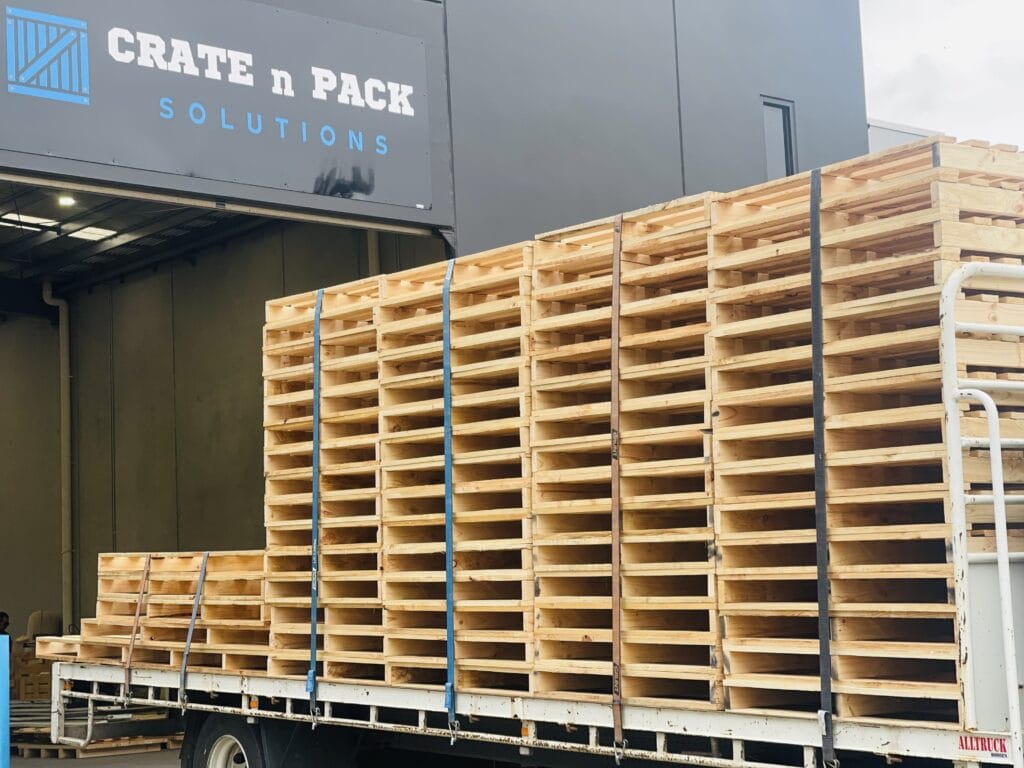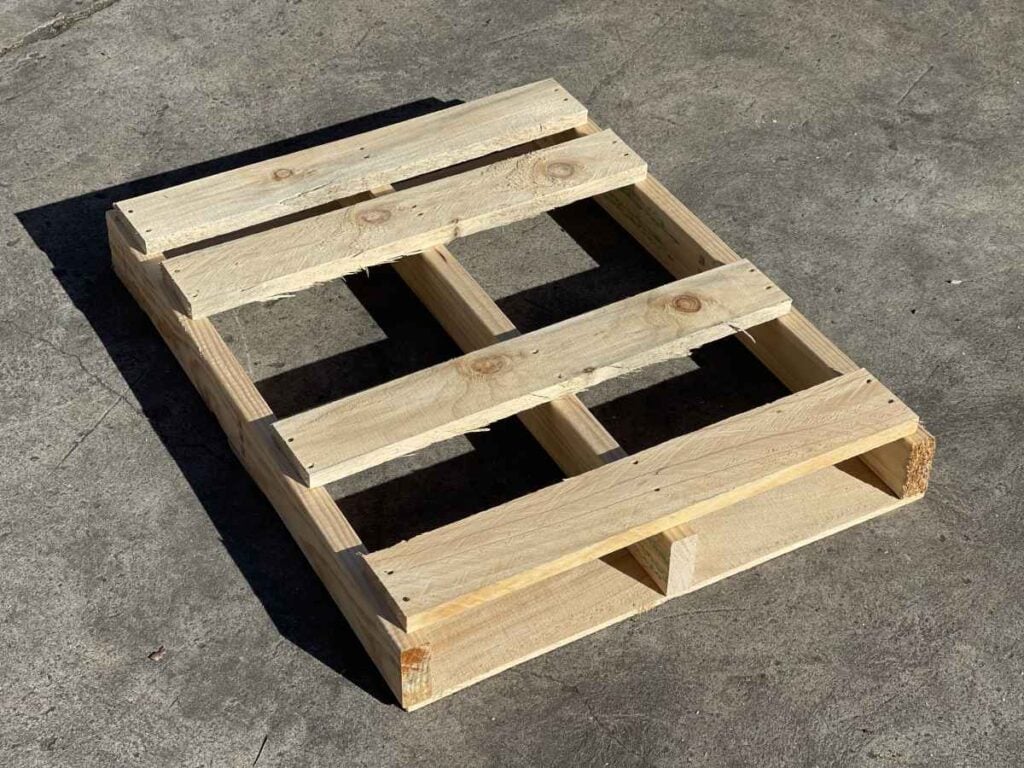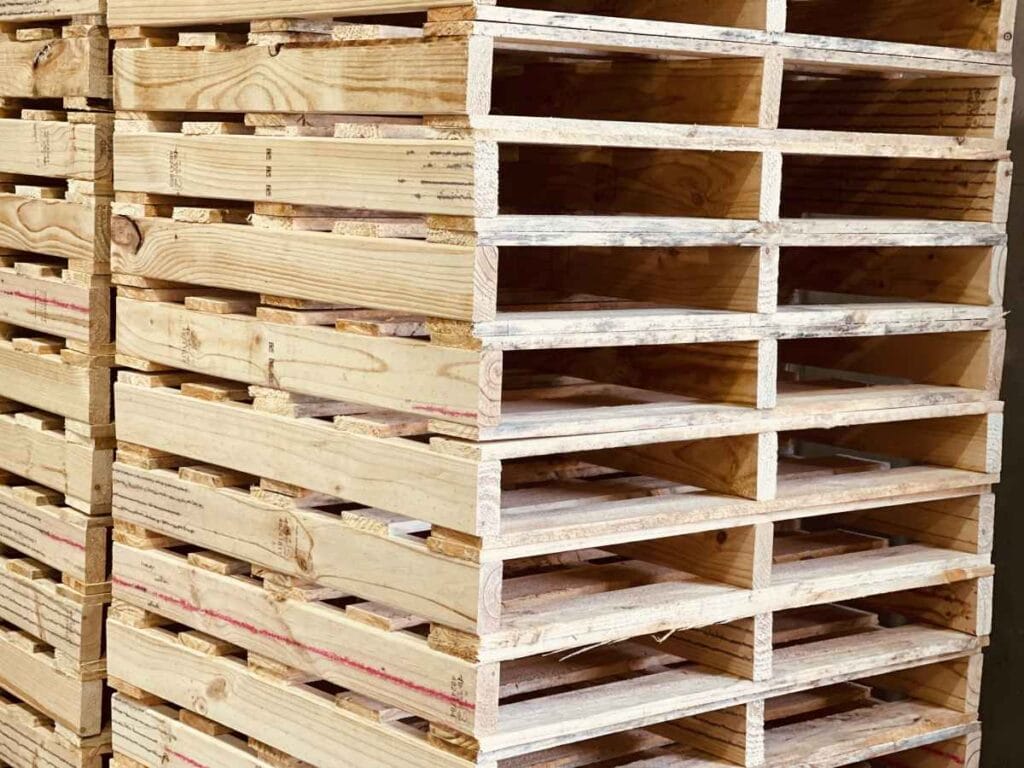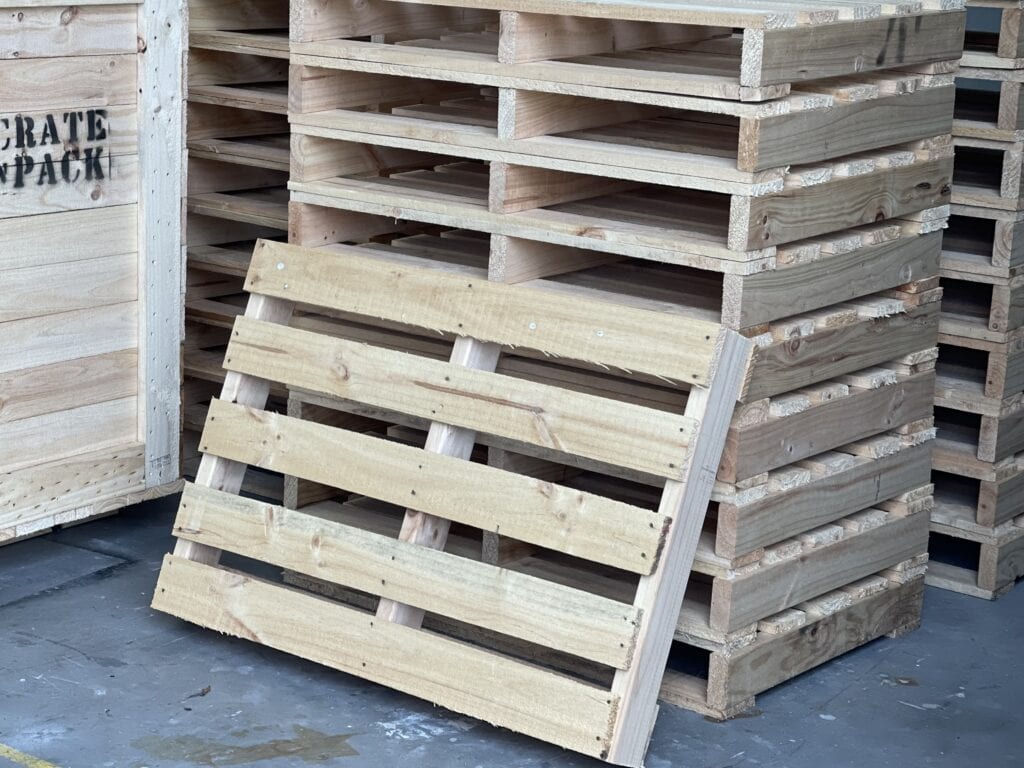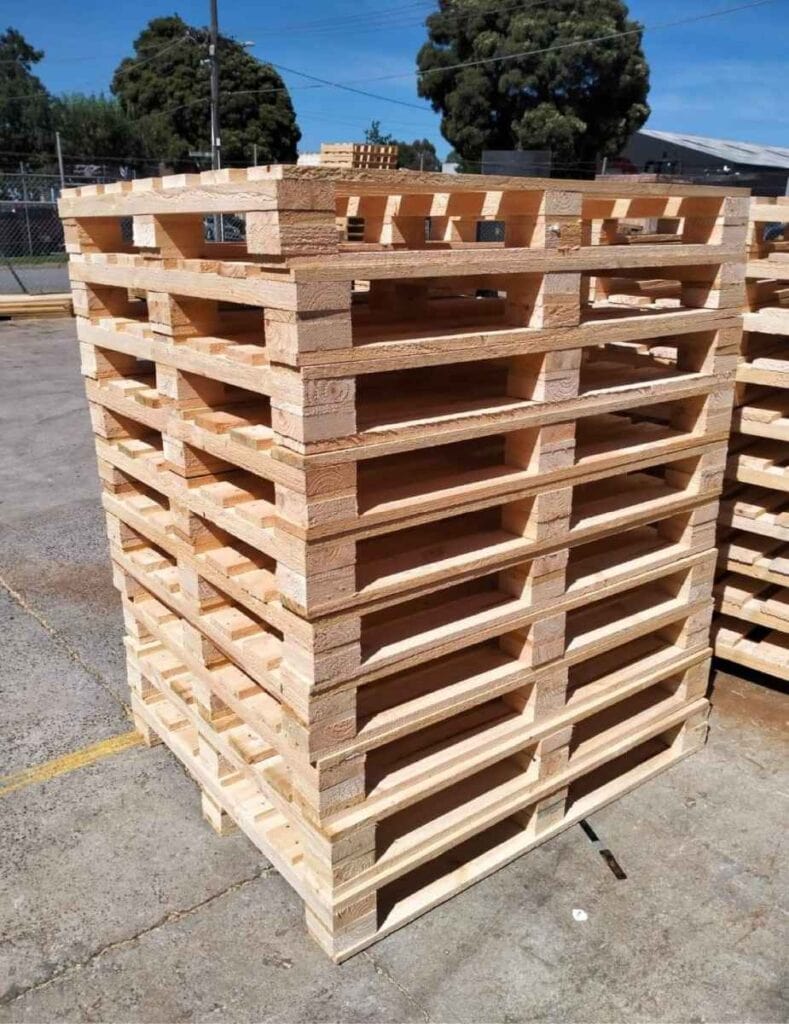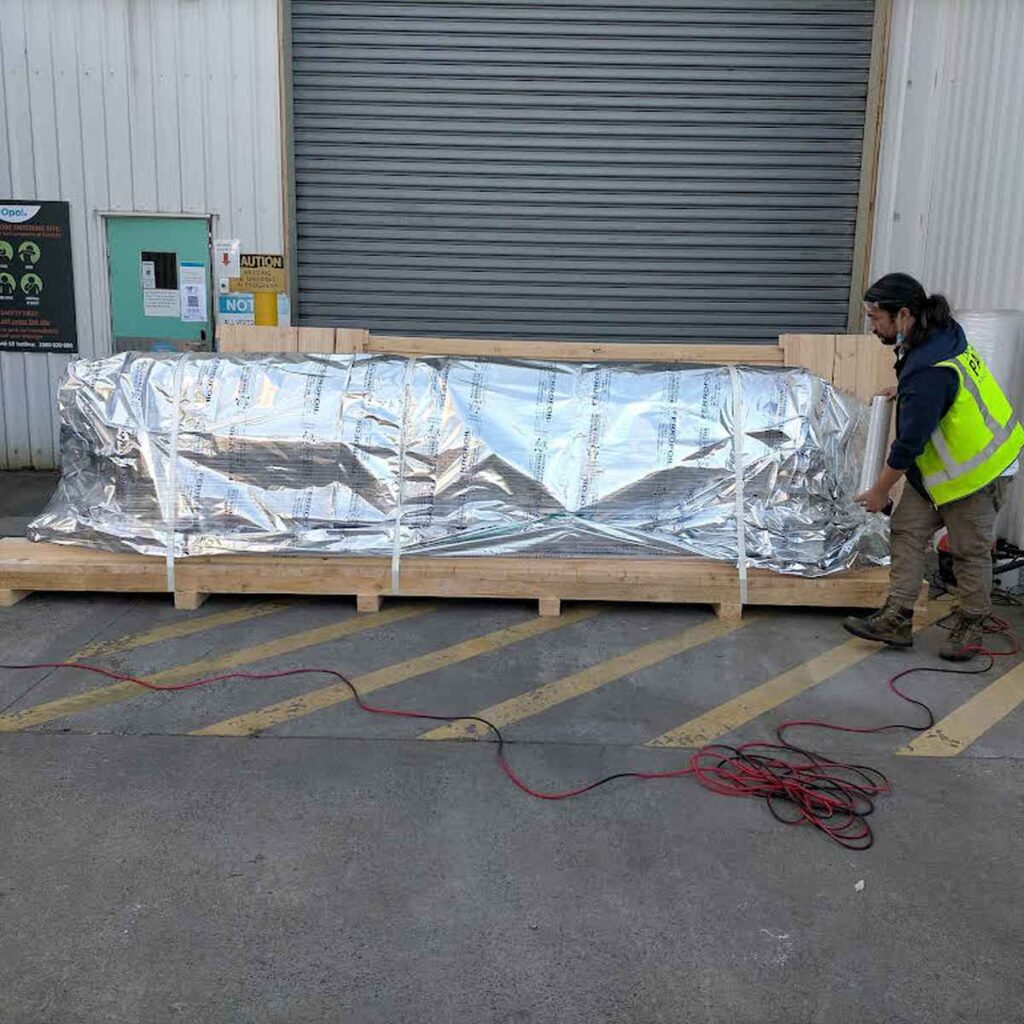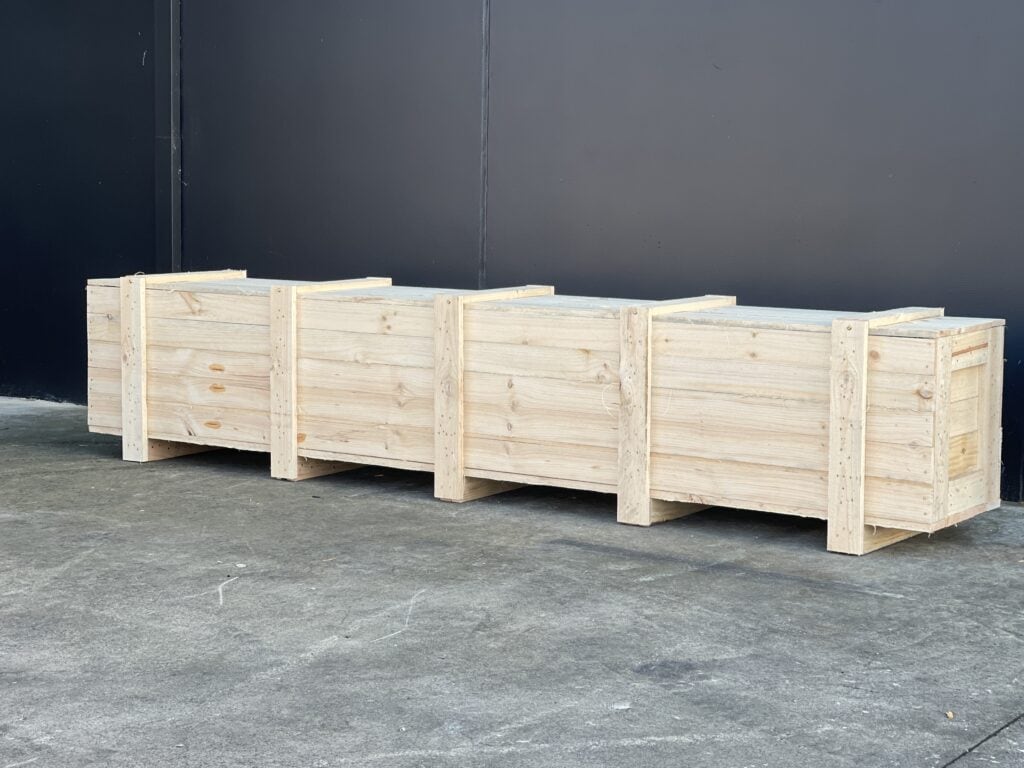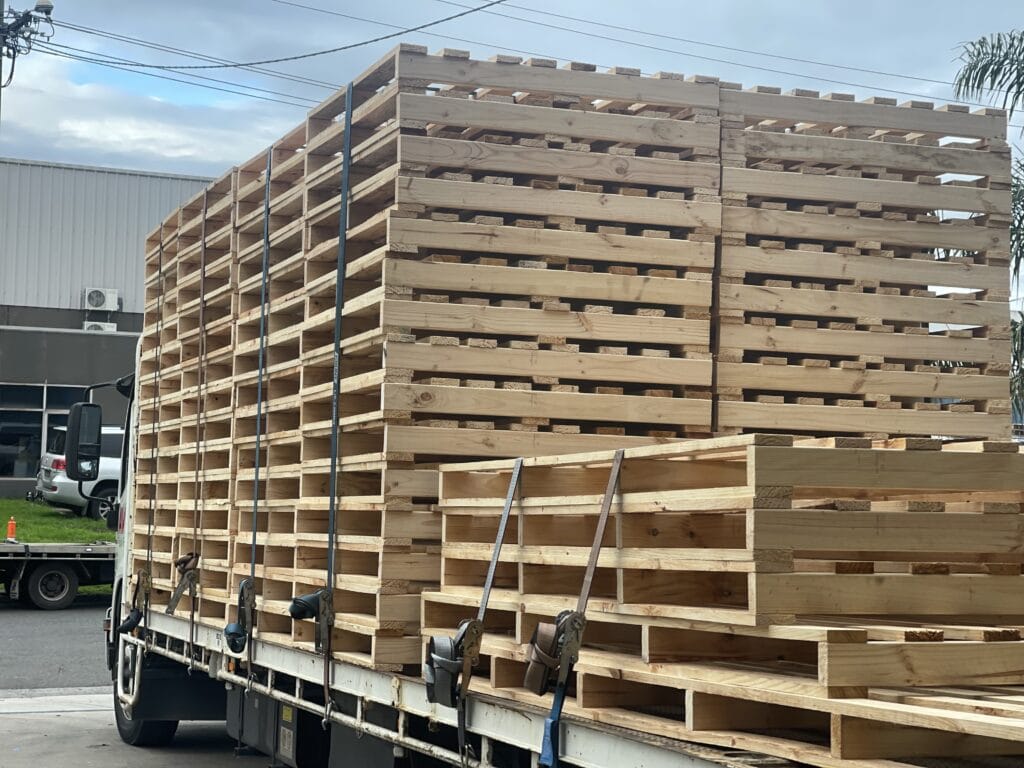When deciding whether to purchase new or used wooden pallets, there are a number of aspects to take into account. As a stable base for transporting goods, wooden pallets play a crucial role in the logistics and shipping industries.
Companies and individuals involved in shipping and storage must know the ramifications of choosing new or old pallets.
There are several benefits to using brand-new wooden pallets, but their dependability and uniformity stand out above the rest. They all have the same dimensions and weight capacities since they are made to strict standards.
This consistency facilitates pallet stacking and handling, especially in automated storage facilities. Additionally, new pallets rarely include defects such as splinters or contaminants.
Because of this, they are very suitable for use in the food and pharmaceutical industries, which have particularly demanding hygiene standards. In addition, modern pallets are typically fabricated using sustainably sourced wood, in keeping with green and accountable sourcing norms.
Used wooden pallets, on the other hand, can help you save money and are better for the environment. These pallets have been put to good use and are now being recycled. Companies can save a lot of money on pallet purchases if they opt for used pallets.
This is great news for businesses trying to cut costs and reduce their carbon footprint. By extending the use of the wood and decreasing the need for new material, reusing pallets helps save natural resources.
Used pallets can save money, but their condition varies greatly, so it's crucial to inspect them thoroughly to make sure they're up to code.
The decision between new and old wooden pallets must be based on the person or company's unique requirements and priorities.
New pallets are a good option for businesses that place a premium on uniformity, cleanliness, and compliance with industry standards, while used pallets are a good option for businesses concerned with cost savings and environmental responsibility.
For maximum adaptability in addressing varying shipping and storage needs, it may be best to employ a mix of new and old pallets. If you want your supply chain to run smoothly and without accidents, you need to manage and maintain your pallets properly.
What is used wooden pallet?
Pallets are best made of wood. It may be used multiple times, is inexpensive, and is strong. Pallets made of wood are very simple to come by. Because of these qualities, they sell quite well in the Vietnamese market. The quality of used wooden pallets is guaranteed to be greater than 90%, despite the fact that they are older pallets. Used wooden pallets are a cost-effective and eco-friendly option for shipping and warehousing goods in any commercial setting.
Things to know about used wooden pallets
A pallet is a flat, wooden surface for storing and transporting items. Wood, plastic, and cardboard are common materials for this. Shipping with pallets is cost-effective since they cut down on the quantity of packaging required and are occasionally reusable.
Pallets simplify the process of stacking products on top of one another due to their flat tops and modular construction.
Pallets are a convenient way to stack and store several products. Because they may be stacked many deep, organisations can store more pallets than would otherwise fit on the warehouse floor.
Block pallets, open-top pallets, solid deck pallets, trispanelized pallets, pallet jack pallets, and bulkhead pallets are only some of the options. Which sort of pallet a company uses also affects the size of the pallet they need.
Pallets have been around for hundreds of years and are still widely used today.
Clean
Check for mould, structural problems, filth, and discolouration in any secondhand wooden pallets you intend to acquire. If you work with food, this becomes much more crucial.
Chemicals used to create stains have the potential to contaminate edible items. Mould and structural problems weaken the wood, making it dangerous to carry pallets with a forklift. Avoid purchasing old pallets with certain markings, even though they can be fixed.
Ingredient
Pine, melaleuca, and acacia are the three most common types of wood used to make pallets. Acacia and melaleuca are less expensive choices. Due to the country's favourable climatic conditions, most types of wood are readily available.
The sole drawback is that they are more prone to termites and have a less aesthetically attractive surface.
Pinewood pallets last longer and look better than other types of wood. If they pass the International Plant Protection Convention's (IPPC) and the European Pallet Association's (EPAL) quality assessment, almost all high-quality pine wood pallets imported into the EU are fumigated using the ISPM-15 protocol before being exported. International. This can cause an increase in shipping costs.
Reliability

The durability requirements of the pallet will vary with its intended purpose.
Make careful you utilise class 1 (i.e. never-before-used) pallets if you plan on storing products for an extended period of time or taking them up with a forklift.
Those are the best and strongest options for the storage facility. Wooden pallets of Class 2 quality are also sturdy, but they typically have been repaired.
Size
Used wooden pallet sizes are vital information to have on hand. Pallet sizes vary by industry, so it's important to choose the correct one for your company. Shipping and handling become more streamlined when all companies in an industry standardise on a single pallet size.
It speeds up the time it takes to compute prices for logistics teams.
Make sure the pallets you buy are compatible with your machinery; mishaps can occur if workers try to lift the wrong-sized pallets with the improper equipment.
Advantages of New Pallets
New pallets offer different advantages than recycled ones.
The most significant benefits of new pallets are their high quality and adaptability. Let's break down each of these aspects into its component parts so that we can learn which ones you value the most.
Superb Quality, Always Dependable
New pallets are typically in better shape than used ones. Unused pallets are delivered to your business in perfect condition. The boards on brand-new pallets won't be weakened or fractured, and there won't be any splinters or discolorations either.
If you're worried about the stability of your load, you might want to invest in some brand new wood pallets.
There will be less danger of harm coming to your product or pallet. This standard should be followed by any business that deals with food production, medical treatments, or requires stringent hygiene protocols. Pallets must be heat treated or brand new for foreign shipments.
Crafted to Order
Another perk of modern pallets is their adaptability. Once a pallet has been made, no changes can be made to it. However, new pallets can be modified to fit your requirements. Manufacturers can design and make new pallets in any configuration they need, both in terms of materials and dimensions.
Customization is sometimes brought up in debates over whether to buy new or secondhand pallets. In other fields, custom pallets aren't required but are strongly encouraged. If your products or materials aren't standard sizes, you could profit from using brand new, custom-made pallets.
New pallets can be ordered in bespoke dimensions to suit your requirements.
We build every pallet to order, so no two pallets will ever be exactly alike. If you intend to reuse pallets multiple times, you should invest in brand new ones.
Among the many possibilities for bespoke pallet construction that we provide is the use of recycled and recovered wood for custom remanufactured pallets.
Their toughness and resilience are unparalleled
Wooden pallets are used for transferring, storing, and distributing heavy goods. Because of this, they must be crafted from hardwood. New hardwood pallets are suitable for transporting the majority of heavy goods.
They are also sturdy and can survive repeated use. However, wooden pallets become brittle and worn out with time, rendering them unfit for transporting, storing, and distributing heavy goods.
If they break down on the way to or from their destination, it could cost a lot. Investing in new pallets is recommended for shipping and redistributing large items.
New pallets are widely available
New pallets are made from new wood, allowing for simple storage. You may rest assured that you will have access to as many pallets as you require, whether we use existing inventory or create new pallets to meet your specifications.
Depending on the quantity of used pallets that have been brought back for recycling and repair, there may not be enough recycled pallets available to fill a big order. If you regularly require a large number of pallets, investing in brand new ones will give you piece of mind that your supply chain won't be disrupted due to a lack of resources.
Buying new pallets is a long-term money saver
New wooden pallets are the most durable option, outlasting their recycled counterparts by a significant margin. Recycled wooden pallets are great for temporary use because they look and feel brand new. Picture the price of a brand new car against that of one that has been in a few accidents but has been repaired.
Even if they both consist of the same components and perform the same functions, one is more likely to break down or require maintenance in the future than the other. If your business puts a lot of stress on pallets, it may be more cost-effective to replace or repair them less frequently by investing in brand new pallets up front.
Frequently Asked Questions
Pallets must now have the Integrated Pollution Prevention and Control (IPPC) logo and are typically marked with a country code, unique number and either HT or MB. DB is also used to signify debarked.
Protruding nails, splintered wood as wood is certainly porous as well. Chemical Hazards - Residual chemicals, or, Biological Hazards - Pathogenic cross - contamination to the interior areas of your facility; including the product itself via the employees who handle pallets.
Wooden pallets struggle to withstand humid environments and harsh weather conditions. They crack, splinter, and absorb water – causing them to deteriorate much faster. The typical lifespan of a wooden pallet ranges from 3-5 years, but plastic pallets have a durable design that can last for up to 10 years.
As standard, wooden pallets can resist a small amount of water without taking any long lasting damage. However, as they are made from timber which does absorb moisture, making wooden pallets waterproof is a great way to ensure that your wooden pallets last longer.
Wood pallets are the most cost-effective option. They are easier to manufacture than other pallets and are heavily used in most industries. You can buy the pallet wood and make the pallets yourself, which can save labor and money on new machinery. Wooden pallets are stronger and more durable than the other options.

